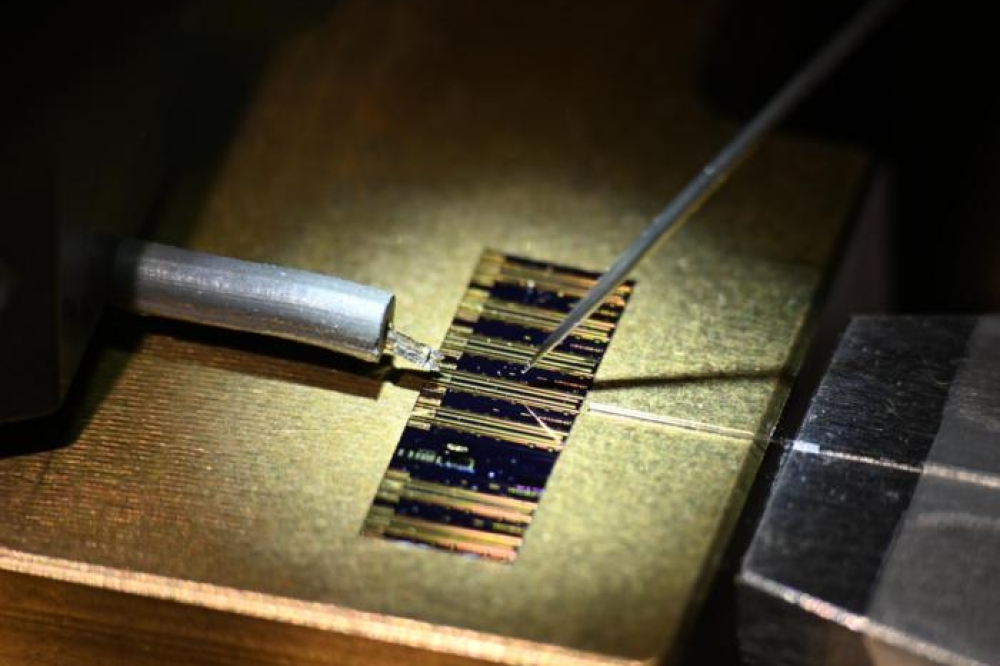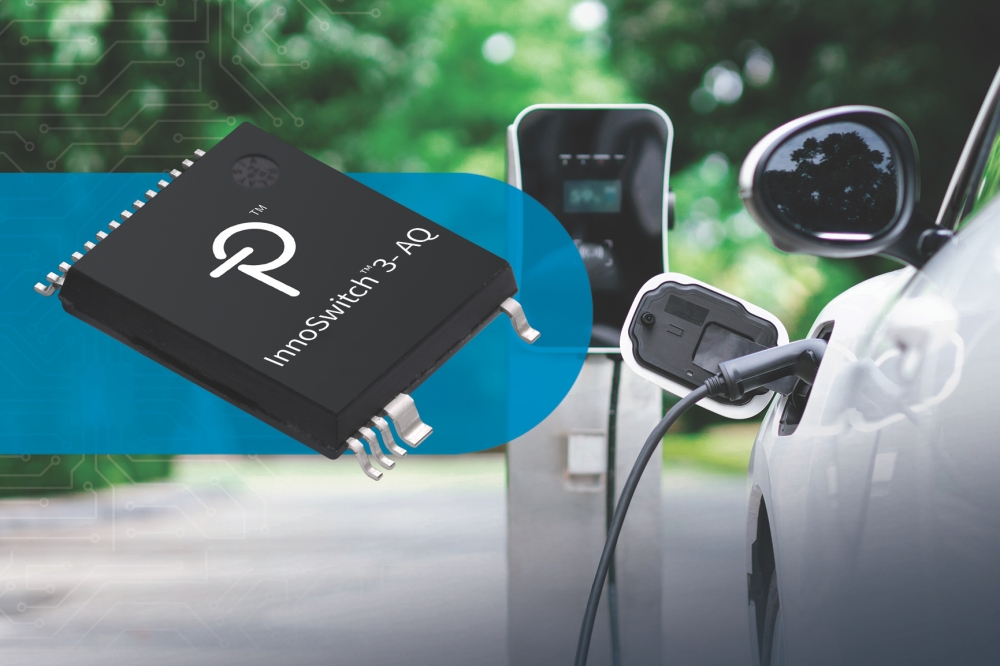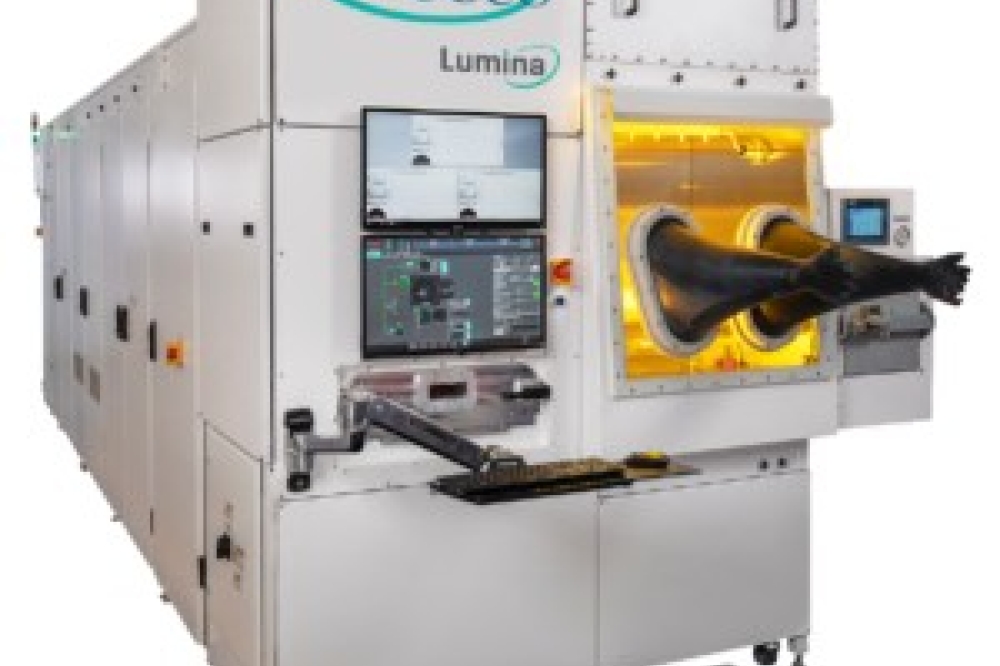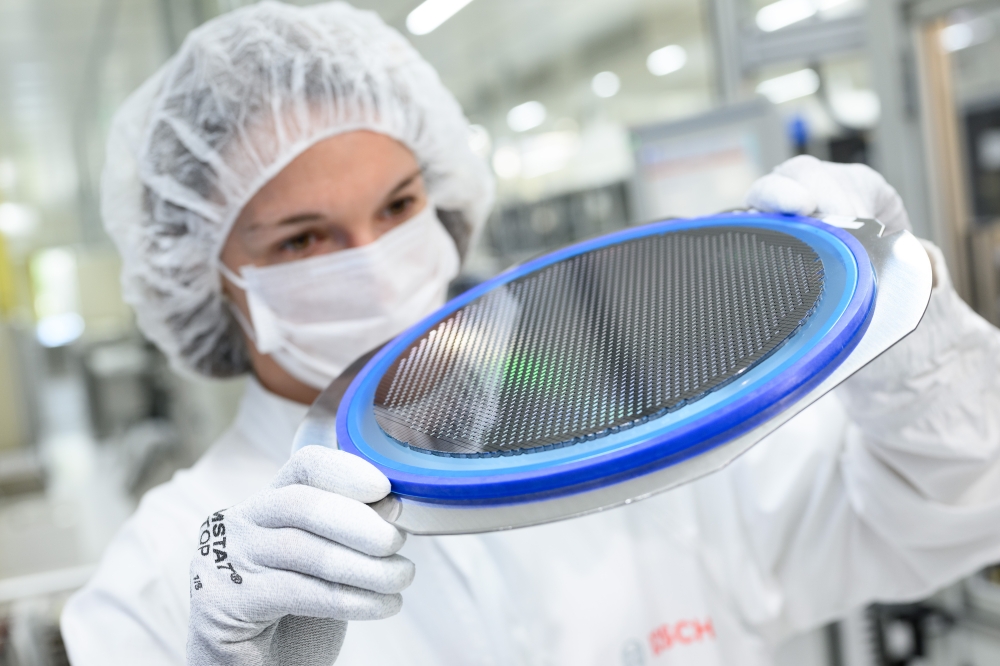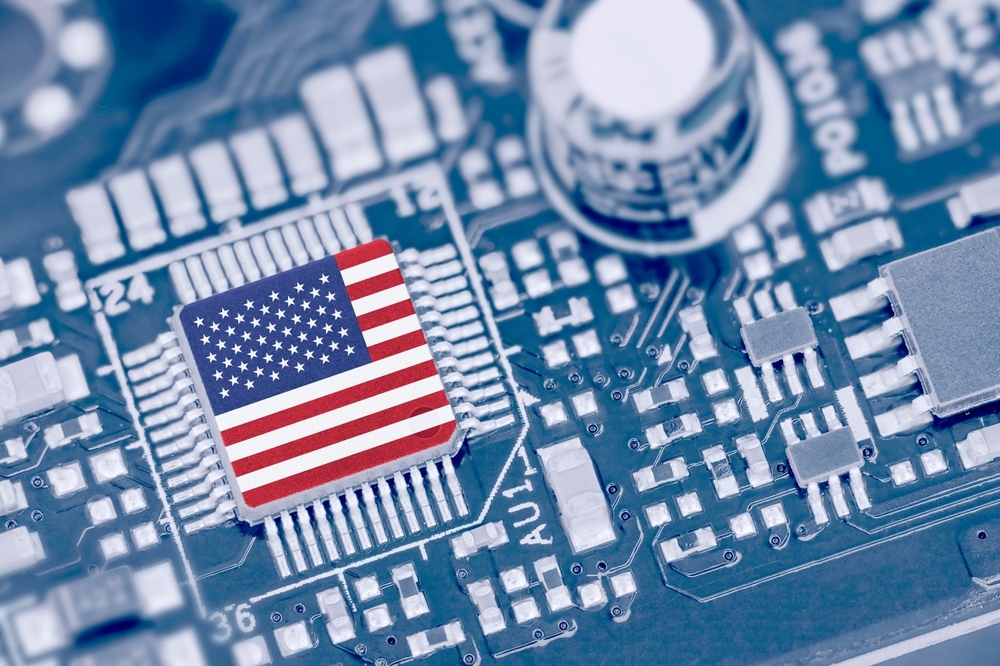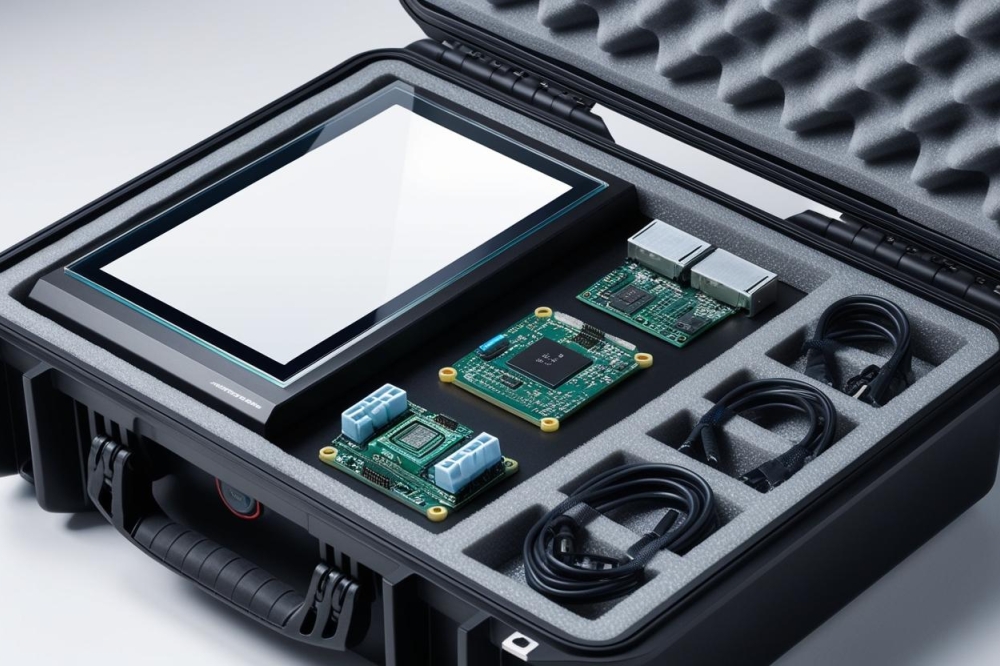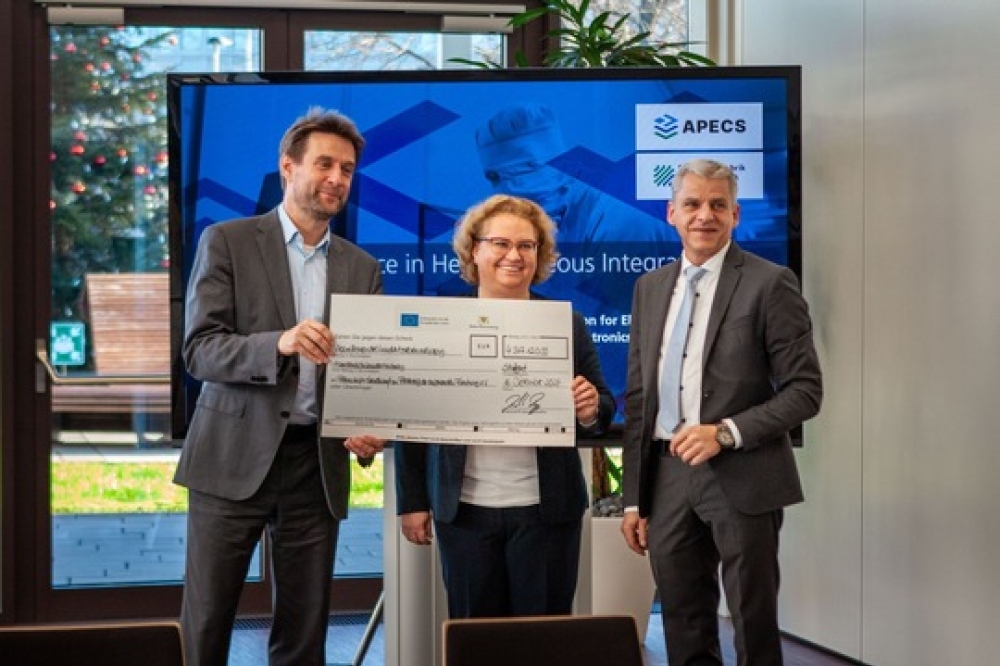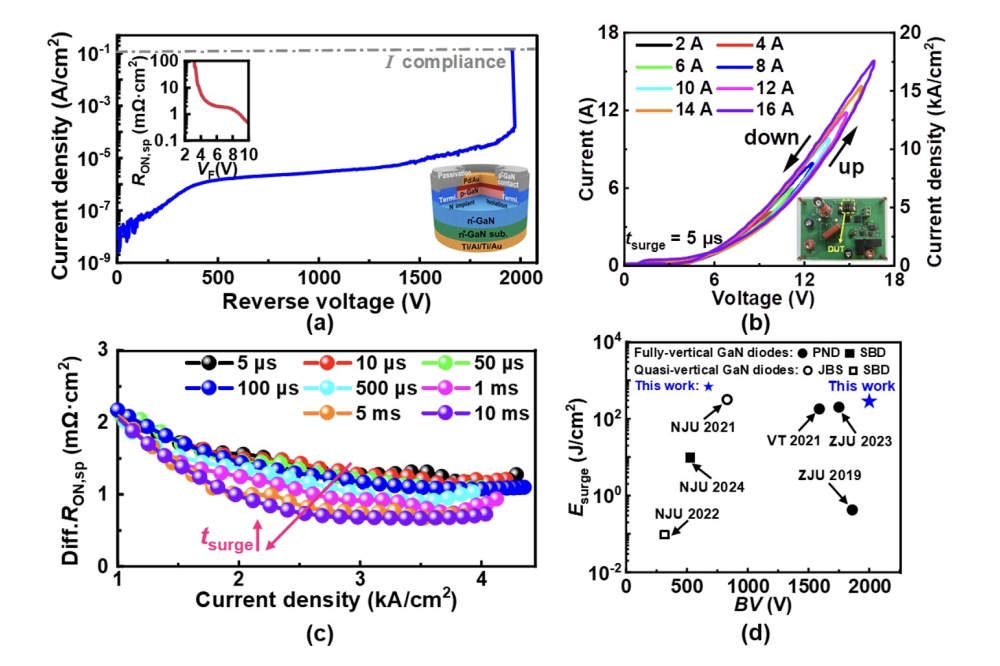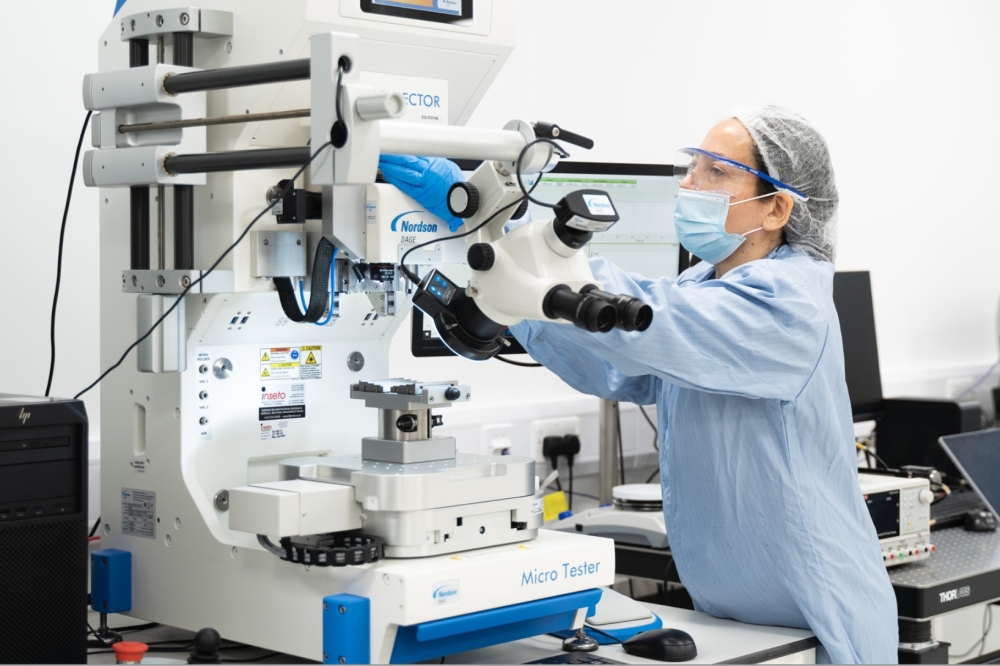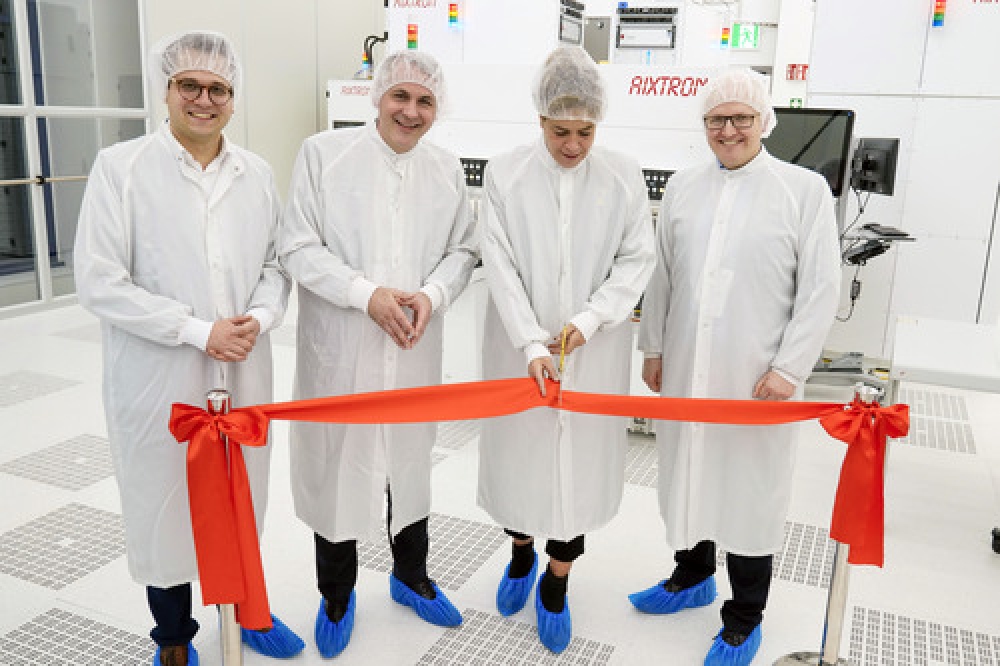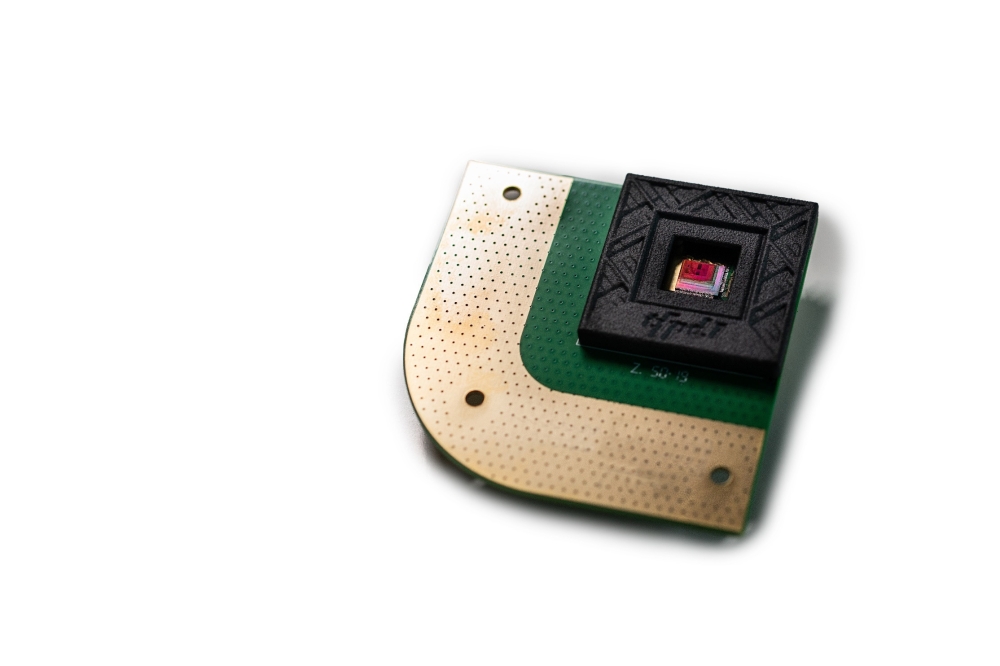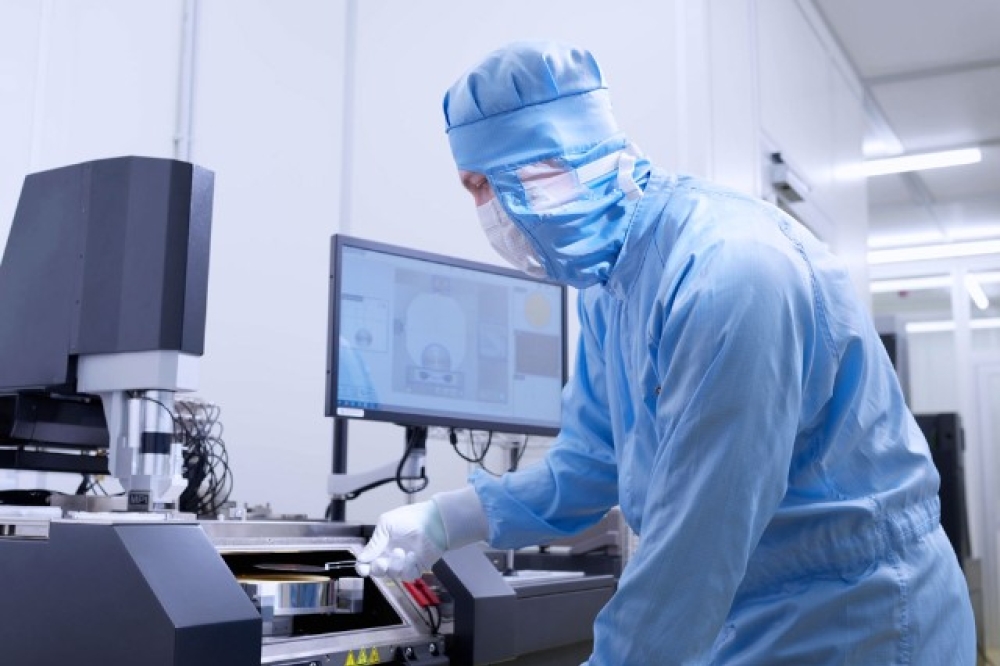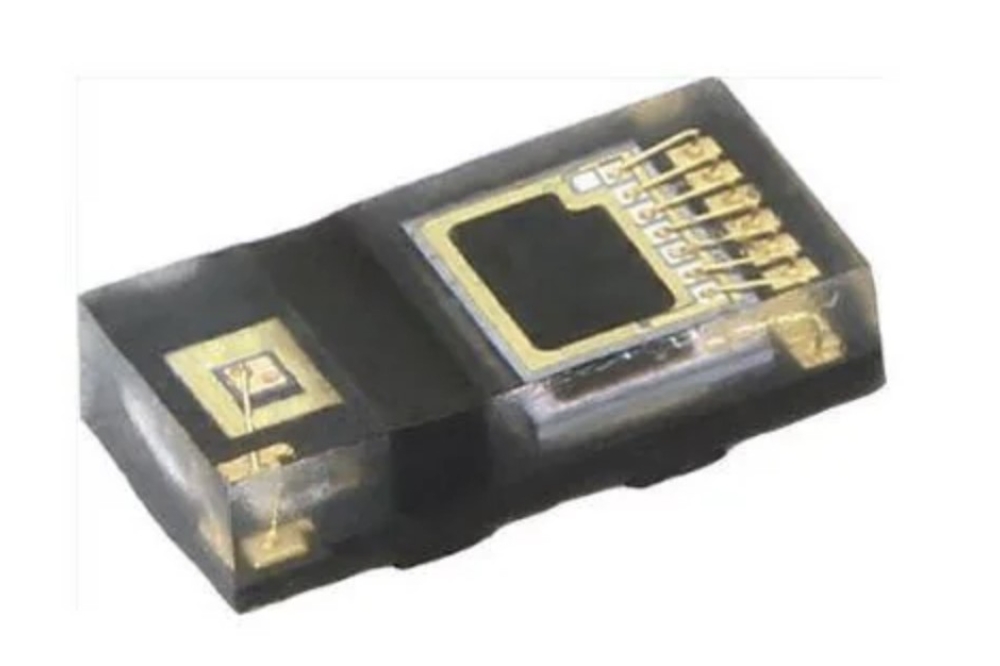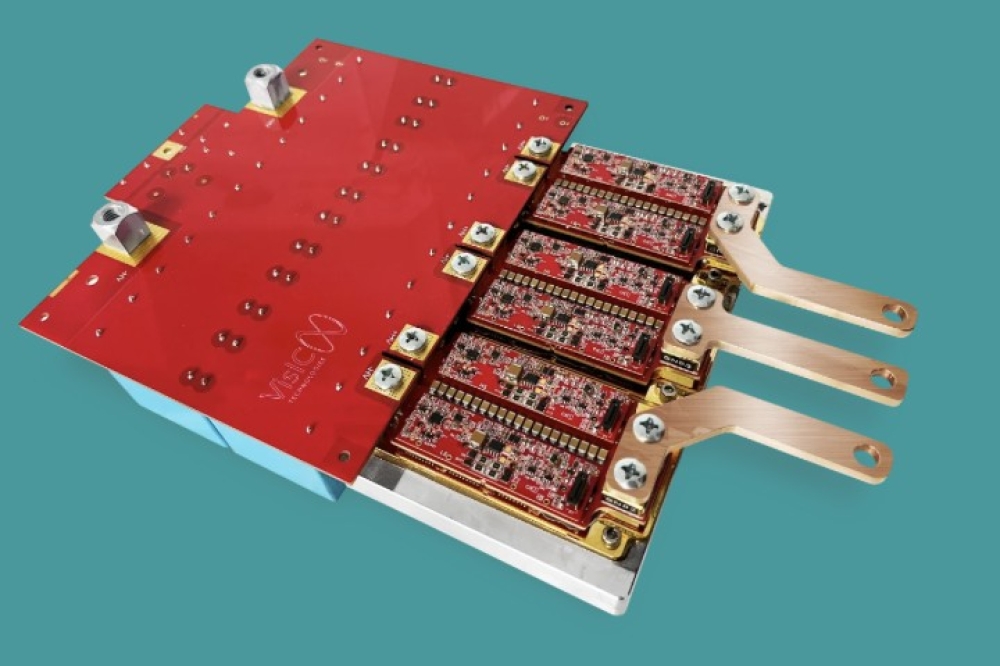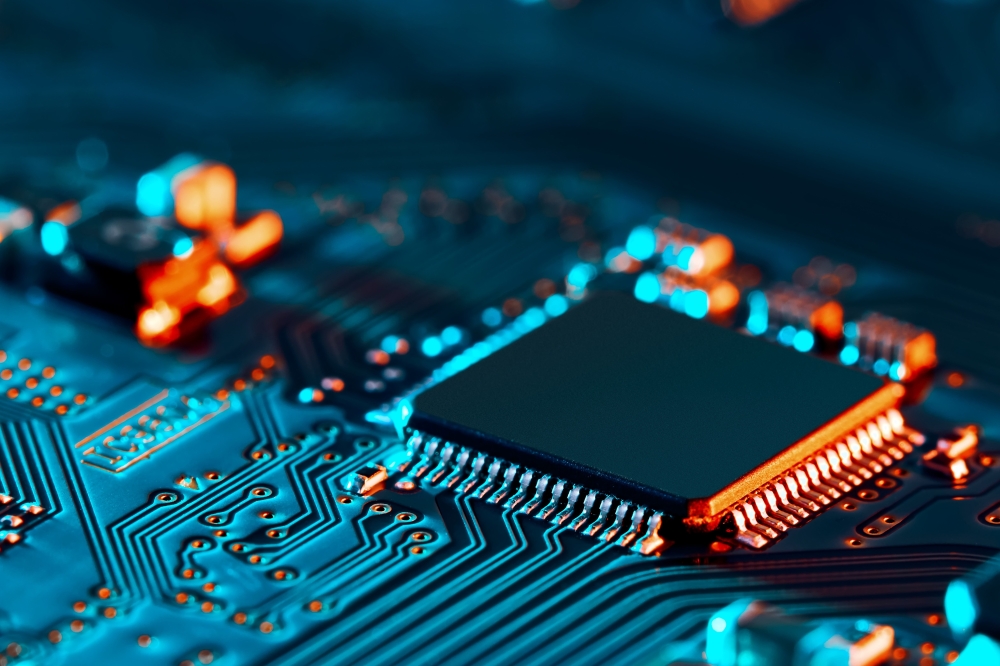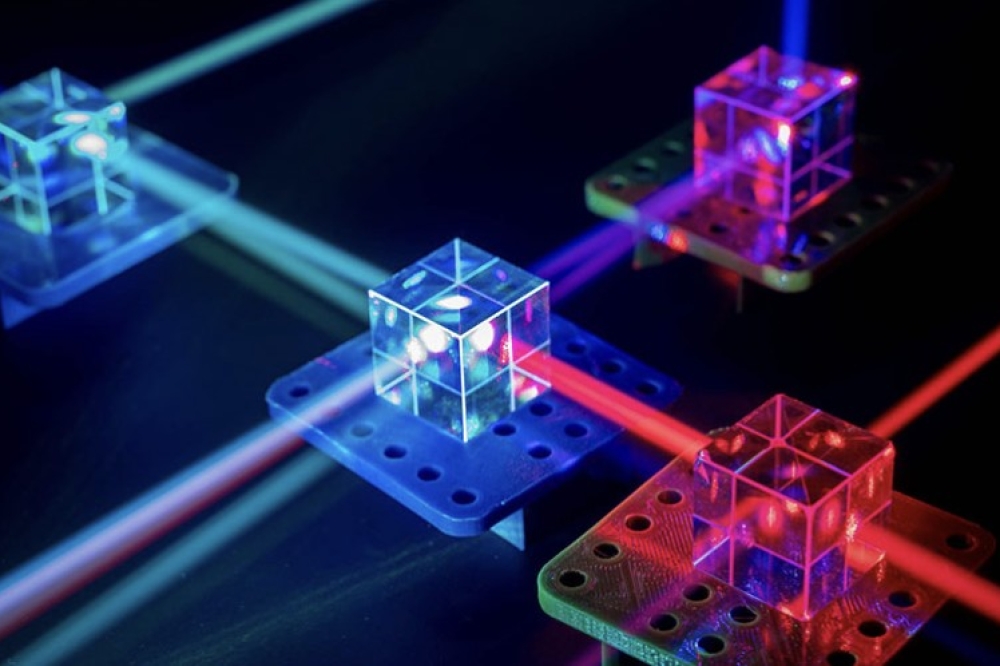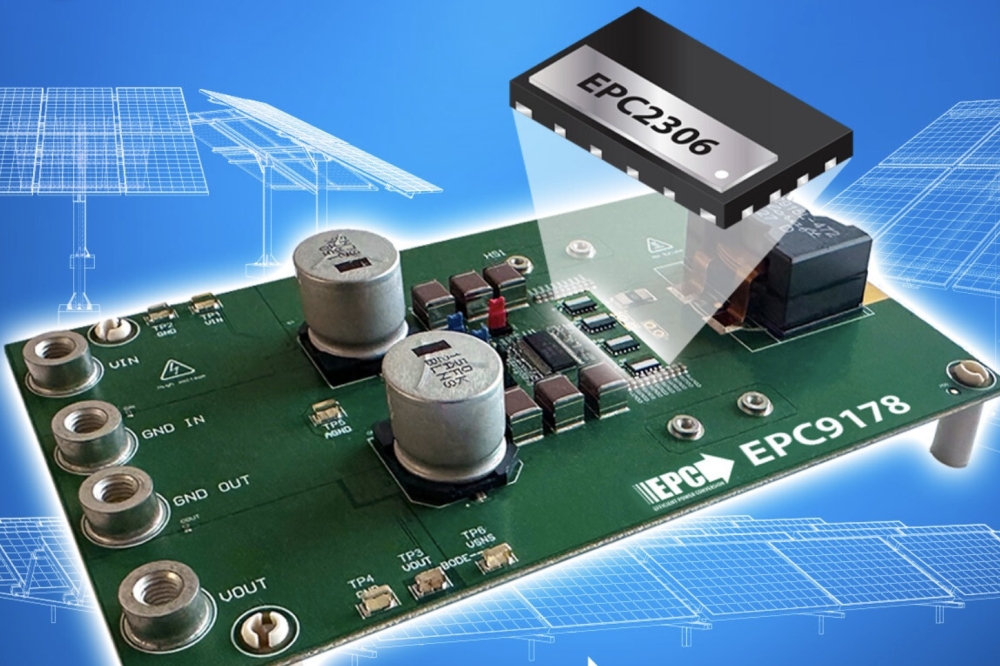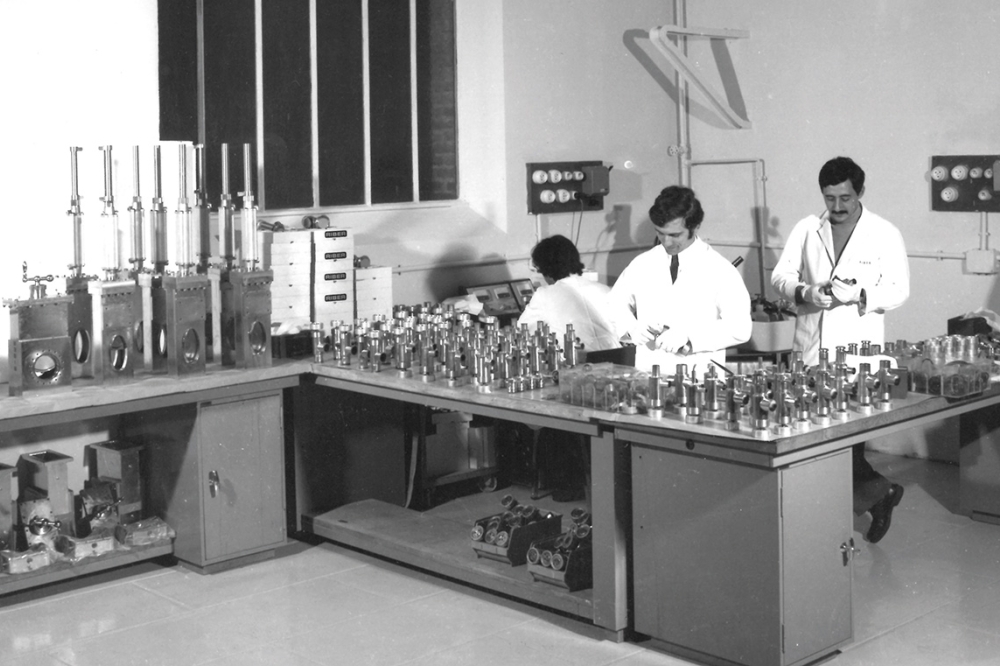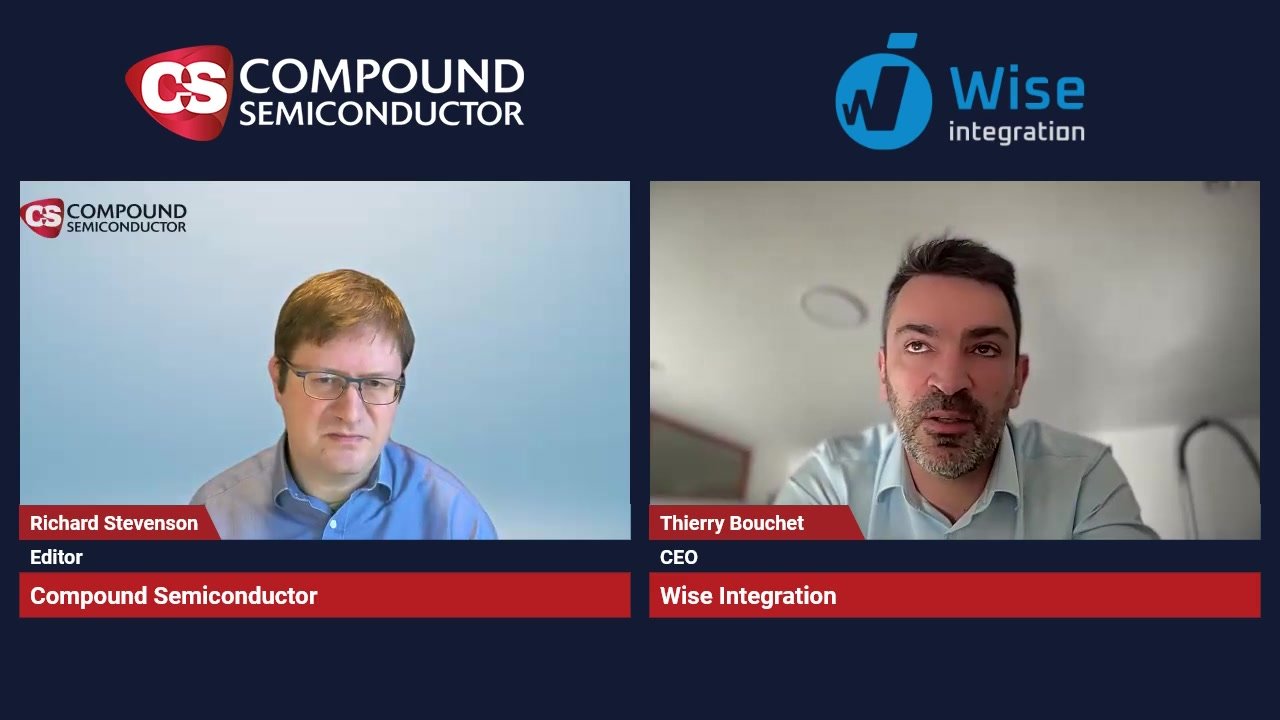News Article
Proof of concept for high efficiency hot-carrier solar cell
Hot-carrier photocurrent from an InGaAs single quantum well solar cell
Researchers from Imperial College London and the US naval Research Laboratory in Washington DC have demonstrated hot-carrier photocurrent from an InGaAs single quantum well solar cell. Their work was detailed in a recent paper in�Applied Phys. Lett.�104, 231115 (2014).
A hot-carrier solar cell (HCSC) is a photovoltaic device with a carrier population that is hot relative to the semiconductor lattice. Such a design aims to reduce the energy lost through heat when a material absorbs photons with energies larger than its bandgap. To achieve this, the photo-generated carriers are collected through energy-selective contacts before they have time to lose their energy as heat. Within a narrow range of energy states, hot-carriers thermalize isoentropically, generating chemical potential with an efficiency approaching that of a Carnot engine. HCSCs thus have a substantially higher fundamental solar energy conversion efficiency limit.
But there are two major HCSC development challenges: hot-carrier absorbers and energy selective contacts. To reach efficiencies close to the maximum thermodynamic limit relies on slowing the rate of carrier cooling in the absorber long enough for them to be transmitted through the energy selective filter contacts.
A hot-carrier absorber requires restricted scattering between carriers and lattice phonons to prevent heat dissipation and generate a thermal gradient between these two populations and efficiently generate chemical potential. Slow carrier cooling in GaAs quantum wells (QWs) relative to bulk has been known about for many years, and in a recent study, a carrier-lattice thermal gradient >100K was characterized in a single InGaAs QW structure under illumination power density 1kW cm-2.
Several structures have been proposed for energy selective contacts including resonant tunneling structures and an all-optical contact. In this paper, the researchers demonstrate hot-carrier photocurrent extracted from an InGaAs QW via an energy selective barrier. A narrow energy selective contact is ideal for efficient generation of chemical potential but any structure with a narrower range of energy states than the absorber can generate some chemical potential isoentropically. The energy selective barrier used in this study is therefore a type of energy selective contact and can produce a partial hot carrier advantage.
The sample in this study used a GaAs pin structure grown by MOCVD on a GaAs substrate and a single strained InGaAs QW with thickness 107�. The sample was initially cooled to 10K in a closed-cycle cryostat, and a bias of 1.2V applied. Under these conditions, photo-excited carriers in thermal equilibrium with the lattice are trapped in the QW. This allows hot-carrier photocurrent to be distinguished from equilibrium photocurrent.
Cryogenic temperatures are not necessary to hot carrier devices but were used in this study to create an energy selective barrier. Focused laser illumination, tuned below the GaAs band-edge (1.52eV at 10K), was used to resonantly excite a non-equilibrium hot-carrier population. The energy distribution of the resulting photoluminescence corresponds to that of the carriers, making it possible to determine the temperature of the population by fitting a Planck-like distribution to the high-energy tail of the emission.
In this study, the photoluminescence measurements show the InGaAs well region of the structure is a hot-carrier absorber. The GaAs barrier has a larger bandgap than the well and therefore a reduced range of energy states. Le Bris and Guillemoles have demonstrated that such a barrier provides the energy selectivity required of an HCSC contact and therefore can generate some chemical potential isoentropically. Measurements in similar structures have demonstrated that this quantum well material can be used as a hot carrier absorber at room temperature.
While the proof of concept device has the two elements necessary for an HCSC, demonstration of a measurable hot-carrier efficiency enhancement would require significant improvement of both elements say the researchers. Further device development would include engineering hot carrier absorber material systems, with reduced carrier cooling lifetime, to generate a larger thermal gradient. In addition, the energy selective barrier would need to be designed to maximize the isoentropic generation of chemical potential, while maintaining good carrier transport.
This work is detailed in the paper�Experimental demonstration of hot-carrier photocurrent in an InGaAs quantum well solar�by LC Hirst et al,�Appl. Phys. Lett.�104, 231115 (2014)
A hot-carrier solar cell (HCSC) is a photovoltaic device with a carrier population that is hot relative to the semiconductor lattice. Such a design aims to reduce the energy lost through heat when a material absorbs photons with energies larger than its bandgap. To achieve this, the photo-generated carriers are collected through energy-selective contacts before they have time to lose their energy as heat. Within a narrow range of energy states, hot-carriers thermalize isoentropically, generating chemical potential with an efficiency approaching that of a Carnot engine. HCSCs thus have a substantially higher fundamental solar energy conversion efficiency limit.
But there are two major HCSC development challenges: hot-carrier absorbers and energy selective contacts. To reach efficiencies close to the maximum thermodynamic limit relies on slowing the rate of carrier cooling in the absorber long enough for them to be transmitted through the energy selective filter contacts.
A hot-carrier absorber requires restricted scattering between carriers and lattice phonons to prevent heat dissipation and generate a thermal gradient between these two populations and efficiently generate chemical potential. Slow carrier cooling in GaAs quantum wells (QWs) relative to bulk has been known about for many years, and in a recent study, a carrier-lattice thermal gradient >100K was characterized in a single InGaAs QW structure under illumination power density 1kW cm-2.
Several structures have been proposed for energy selective contacts including resonant tunneling structures and an all-optical contact. In this paper, the researchers demonstrate hot-carrier photocurrent extracted from an InGaAs QW via an energy selective barrier. A narrow energy selective contact is ideal for efficient generation of chemical potential but any structure with a narrower range of energy states than the absorber can generate some chemical potential isoentropically. The energy selective barrier used in this study is therefore a type of energy selective contact and can produce a partial hot carrier advantage.
The sample in this study used a GaAs pin structure grown by MOCVD on a GaAs substrate and a single strained InGaAs QW with thickness 107�. The sample was initially cooled to 10K in a closed-cycle cryostat, and a bias of 1.2V applied. Under these conditions, photo-excited carriers in thermal equilibrium with the lattice are trapped in the QW. This allows hot-carrier photocurrent to be distinguished from equilibrium photocurrent.
Cryogenic temperatures are not necessary to hot carrier devices but were used in this study to create an energy selective barrier. Focused laser illumination, tuned below the GaAs band-edge (1.52eV at 10K), was used to resonantly excite a non-equilibrium hot-carrier population. The energy distribution of the resulting photoluminescence corresponds to that of the carriers, making it possible to determine the temperature of the population by fitting a Planck-like distribution to the high-energy tail of the emission.
In this study, the photoluminescence measurements show the InGaAs well region of the structure is a hot-carrier absorber. The GaAs barrier has a larger bandgap than the well and therefore a reduced range of energy states. Le Bris and Guillemoles have demonstrated that such a barrier provides the energy selectivity required of an HCSC contact and therefore can generate some chemical potential isoentropically. Measurements in similar structures have demonstrated that this quantum well material can be used as a hot carrier absorber at room temperature.
While the proof of concept device has the two elements necessary for an HCSC, demonstration of a measurable hot-carrier efficiency enhancement would require significant improvement of both elements say the researchers. Further device development would include engineering hot carrier absorber material systems, with reduced carrier cooling lifetime, to generate a larger thermal gradient. In addition, the energy selective barrier would need to be designed to maximize the isoentropic generation of chemical potential, while maintaining good carrier transport.
This work is detailed in the paper�Experimental demonstration of hot-carrier photocurrent in an InGaAs quantum well solar�by LC Hirst et al,�Appl. Phys. Lett.�104, 231115 (2014)

